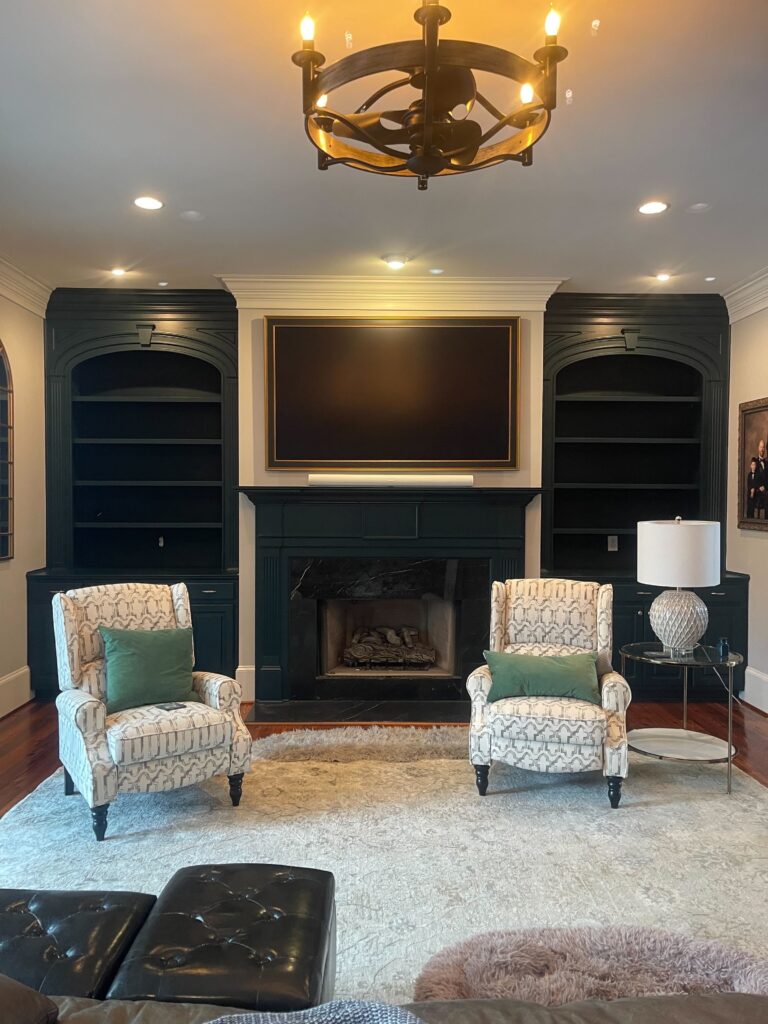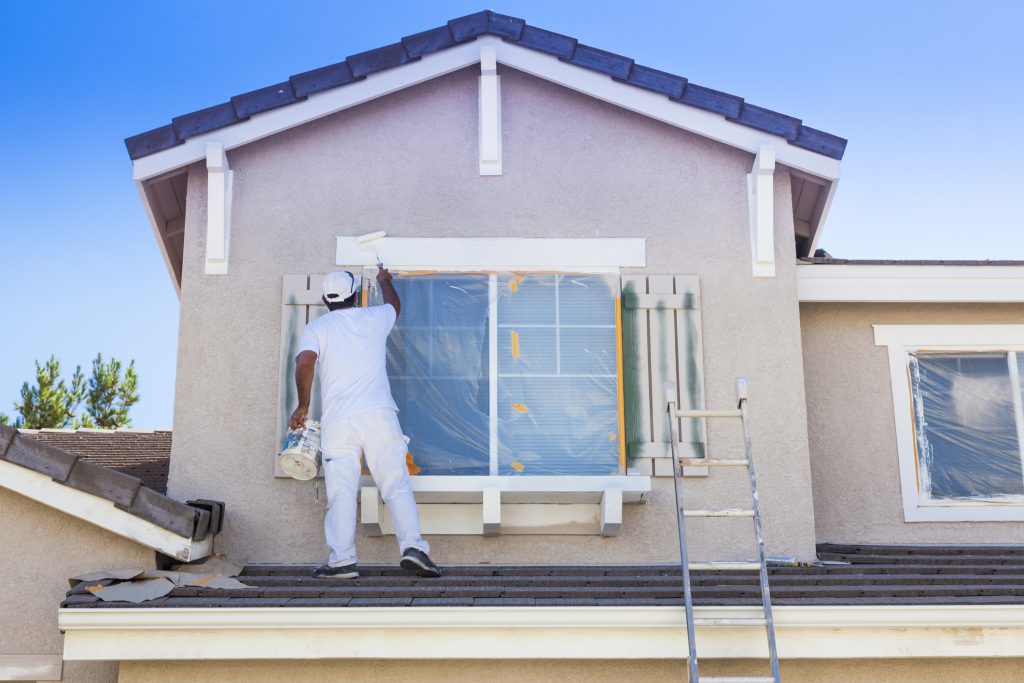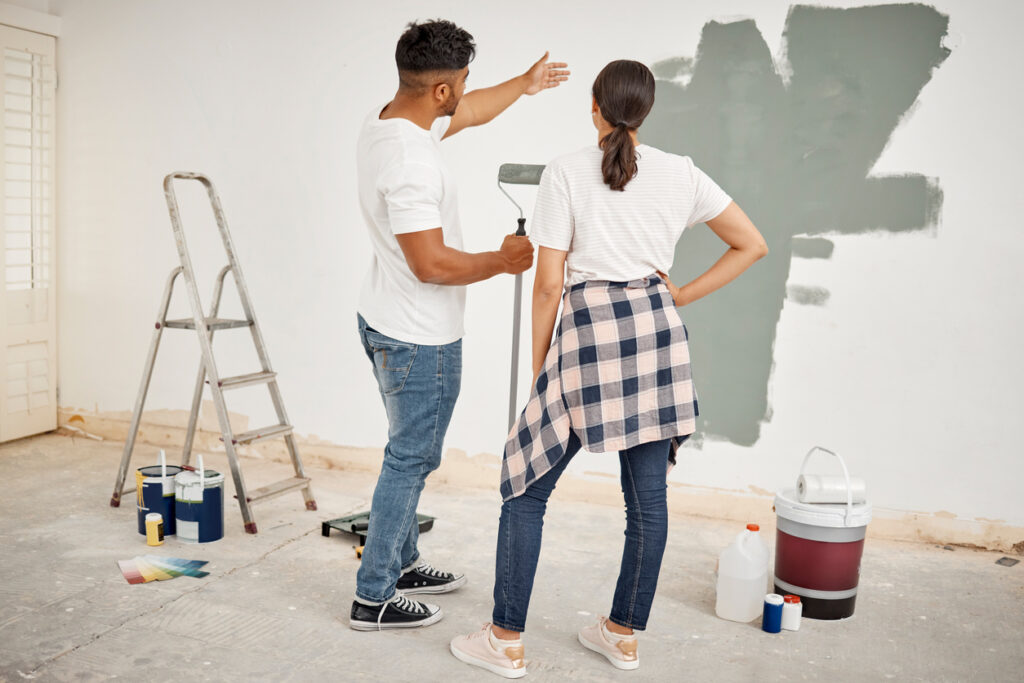A clean jobsite directly affects the quality of paint adhesion and the longevity of the finish. Dust and debris left on siding or trim can interfere with primer bonding, resulting in uneven coverage and early failure. For surfaces like wood or stucco, unclean conditions may trap moisture or mildew, leading to bubbling or peeling. Professional painters often wipe down surfaces before each new coat and seal containers properly between uses.
Scattered tools and debris can cause trip hazards or damage to landscaping. Cleanliness ensures the crew can work efficiently the next day without re-prepping areas or untangling cords. Most importantly, a tidy worksite signals attention to detail — which builds trust with homeowners and boosts perceived value.
Expected Daily Cleanup for Exterior Painting Crews

Professional Standards by Task Type
| Task | Tools Involved | End-of-Day Storage | Cleanup Protocol |
|---|---|---|---|
| Sanding | Orbital sander, vacuum | Tools stored in truck | Sweep or vacuum dust from all surfaces |
| Scraping | Scrapers, buckets | All tools gathered | Collect all paint chips using tarps |
| Priming | Brushes, sprayers | Clean tools off-site | Seal primer cans, wipe drips |
| Topcoating | Rollers, sprayers | Protective wrap overnight | Remove excess paint, cover open containers |
These actions prevent contamination of work areas, maintain worker safety, and reduce waste.
Secure Storage of Materials and Waste
At the end of each workday, solvents, paints, and thinners should be stored in a temperature-safe environment, out of direct sun or rain. Under OSHA guidelines, volatile materials must be sealed, labeled, and stored away from ignition sources. Containers left outside overnight without lids risk environmental violations and neighborhood complaints.
Final Cleanup: Completion Protocols for a Professional Job

Checklist of End-of-Project Cleanup Tasks
| Surface Area | Cleanup Method | Materials Removed | Client Responsibility |
|---|---|---|---|
| Siding | Inspect and wipe clean | Masking, plastic | Optional final inspection |
| Walkways | Sweep and pressure rinse | Paint flakes | None |
| Porches | Blower and hand-clean | Dust, chips | None |
| Yard | Final pass for debris | Tarps, masking waste | Optional walkthrough |
Final cleanup should occur on the last painting day or the day after, before billing is finalized. Homeowners should expect the crew to remove all ladders, scaffolding, tape, plastic, and debris unless otherwise noted in the contract.
Paint Disposal and Leftover Management
Professional painters follow EPA’s Resource Conservation and Recovery Act (RCRA) guidelines for disposing of hazardous waste. Excess paint should be clearly labeled with:
-
Color name or code
-
Application date
-
Exterior use tag
Homeowners can request to keep labeled cans for touch-ups or future color matching.
When Mess Signals a Bigger Problem
Visible Signs of Neglect
| Issue | What It Indicates | Risk Level | Corrective Action |
|---|---|---|---|
| Spilled paint | Carelessness | High | Request immediate cleanup |
| Unsecured ladders | Safety violation | Severe | Halt work until corrected |
| Loose masking | Wind damage risk | Moderate | Re-secure masking |
| Dust-covered surfaces | Poor sanding cleanup | Medium | Clean thoroughly before coating |
Neglected sites can result in property damage, failed inspections, or even liability claims if someone is injured. It’s more than an eyesore — it’s a red flag.
Communication and Oversight Failures
Poor jobsite conditions often stem from a lack of supervision. A well-run crew has a foreman or project manager conducting end-of-day walkthroughs, logging progress, and documenting cleanup. If you find yourself chasing updates or pointing out messes repeatedly, it’s time to reassess the contractor.
Setting the Right Expectations Before Work Begins

What to Include in the Painting Contract
Ensure your painting agreement includes:
-
Daily and final cleanup expectations
-
Photo documentation of completed areas
-
Final walkthrough with punch list
-
Paint disposal or retention instructions
-
Penalties for unfinished or sloppy cleanup
This protects both you and the contractor from misunderstandings.
Interview Questions to Ask Your Painter
Ask direct, specific questions like:
-
“How do you secure leftover paint and tools at the end of each day?”
-
“What’s your process for final cleanup once the job is done?”
“Will someone do a final inspection with me?”
Good painters will confidently explain their system, often referencing written protocols or past examples.
What to Do If Your Pro Painter Leaves a Mess
Even the most thorough vetting process can sometimes miss red flags. If your pro painter is leaving a mess behind each day—or worse, walking away from the job with debris still on your property—it’s important to act quickly, calmly, and constructively.
Step 1: Document the Issues Clearly
Before confronting anyone, take clear, timestamped photos of the mess. This includes:
-
Paint splatters on walkways, siding, or landscaping
-
Unsecured ladders or scattered tools
-
Trash (cups, food wrappers, paint chip piles)
-
Improperly stored or open paint cans and rags
Pro painters typically have cleanup protocols, so photo evidence helps clarify whether they were followed.
Step 2: Review the Contract or Estimate
Look for any mention of:
-
Daily cleanup routines
-
End-of-project cleanup responsibilities
-
Supervisor oversight or quality control guarantees
If you didn’t get these terms in writing, don’t worry—you can still use general industry standards as a reference. Pro painters know what’s expected and will usually acknowledge a gap once it’s pointed out.
Step 3: Bring It Up Professionally and Promptly
Use respectful but direct language. You might say:
“I’ve noticed there’s been a consistent mess left behind—paint chips, tools, and masking materials around the yard. Can we talk about how your crew handles daily cleanup?”
Or:
“Is there someone on the team assigned to inspect the site at the end of each day? I’d like to be sure we’re on the same page about jobsite organization.”
A good pro painter will take your concerns seriously and make changes right away.
Step 4: Insist on a Cleanup Reset or Mid-Job Walkthrough
If problems continue, request a mid-job walkthrough. Bring a printed or digital checklist that includes:
-
All debris and trash removed daily
-
All walkable areas swept or blown off
-
Paint spills wiped immediately
-
Tools stored safely and compactly
-
No open solvents or paint cans left out
Ask the pro painter to walk the property with you before the next day’s work begins. Sometimes, issues result from rushed labor or crew miscommunication—easy to fix once noticed.
Step 5: Pause Payment if Necessary
If the mess signals deeper issues—poor quality control, ignored prep, or missed specs—consider withholding final payment until the situation is addressed. Be sure to:
-
Document all issues and conversations
-
Reference the contract if cleanup was specified
-
Provide a clear, written list of corrections needed
Most pro painters will resolve problems quickly once money is on the line.
When to Consider Hiring a New Crew
If your painter continually:
-
Leaves tools, trash, or paint materials behind
-
Fails to respond to respectful feedback
-
Damages landscaping or structures through neglect
-
Skips scheduled walkthroughs or final cleanup
…you may need to fire them and bring in a reputable replacement. A pro painter should never treat your home like a jobsite dump. Cleanup is part of the craft.
Clean Work Reflects Quality Work
Cleanliness isn’t an add-on service — it’s a basic expectation from any reputable pro painter. From setup to final walk-through, your crew’s attention to cleanup reflects their overall professionalism. Don’t hesitate to talk about these details before work starts, and choose a painter who treats your property like their own.

